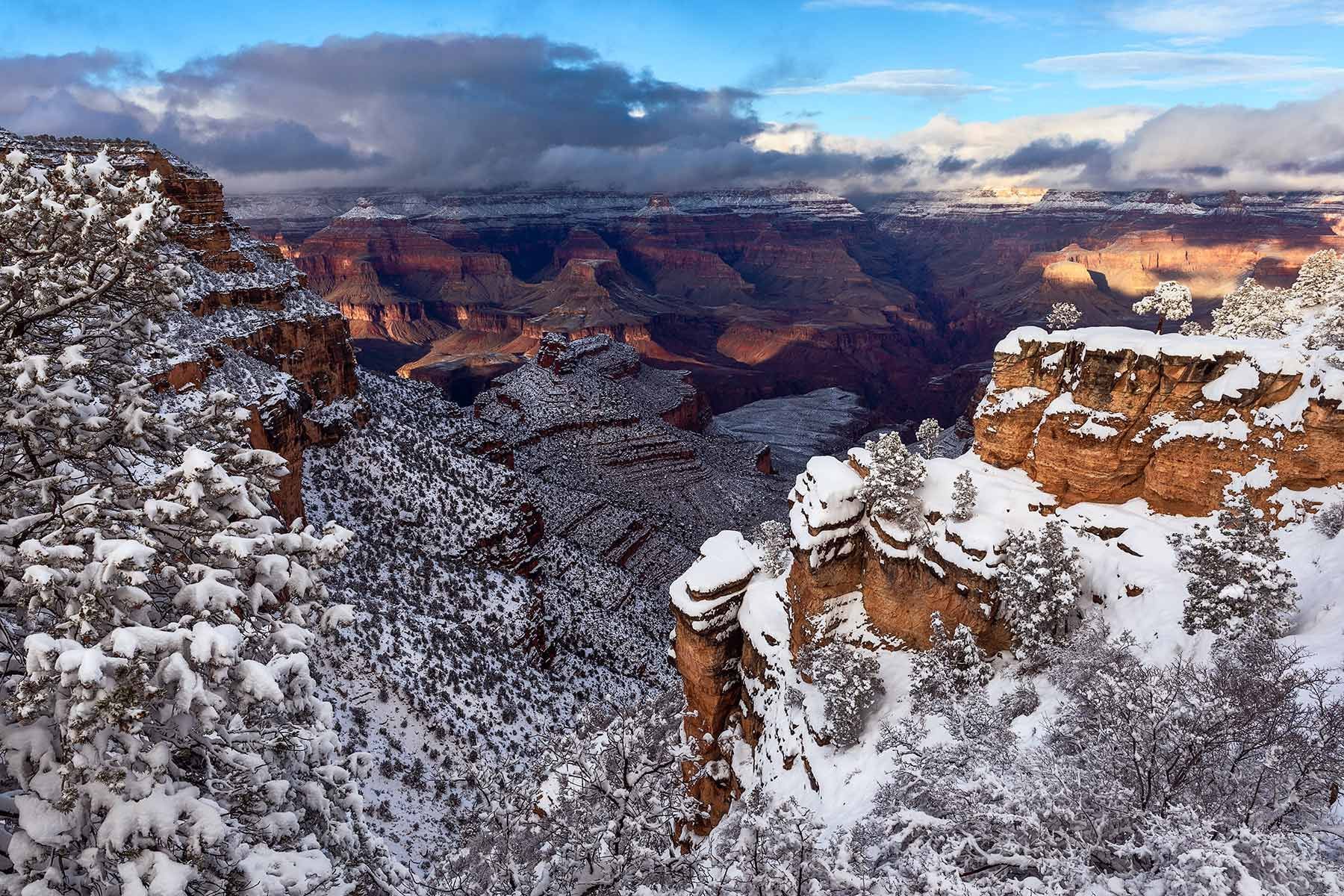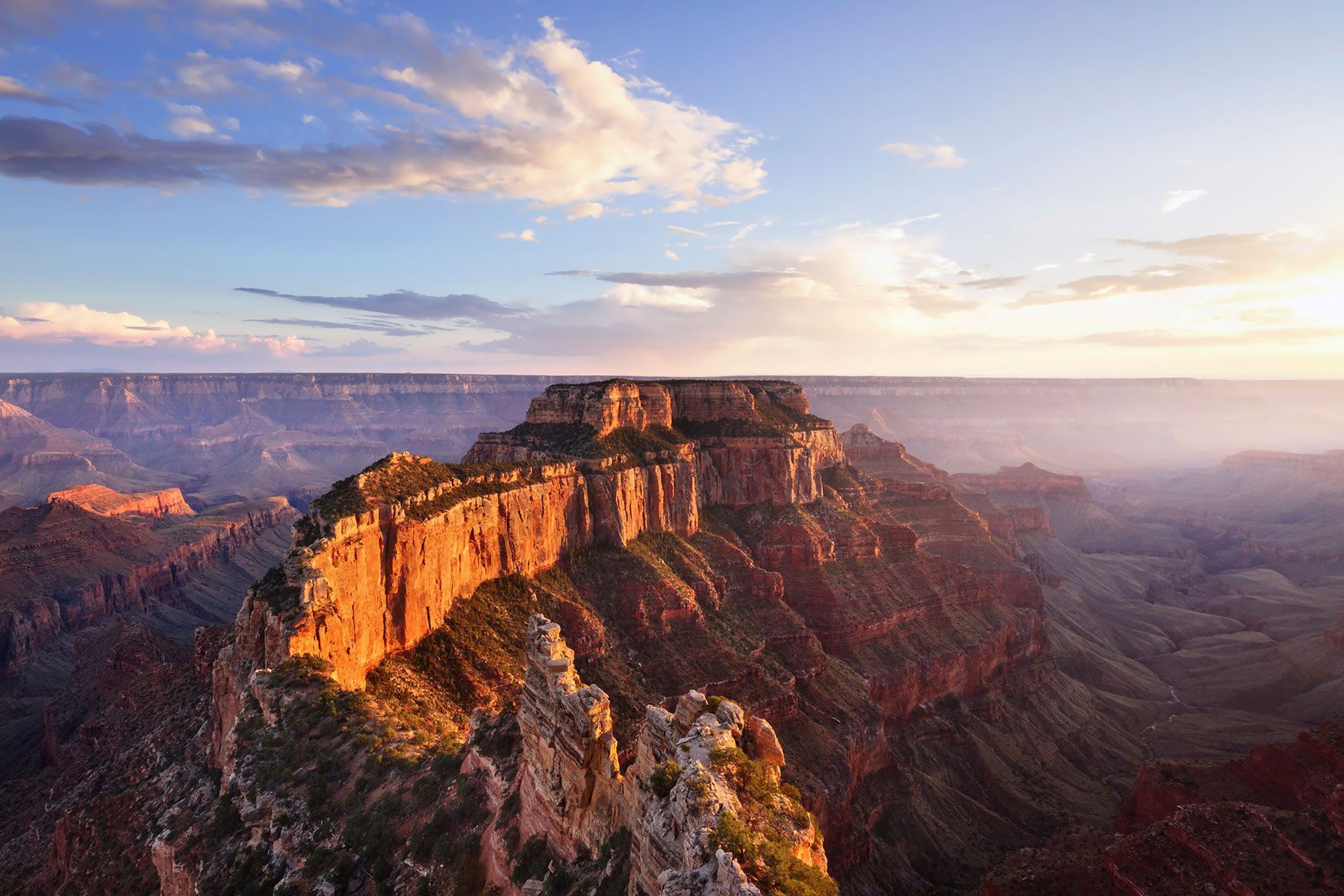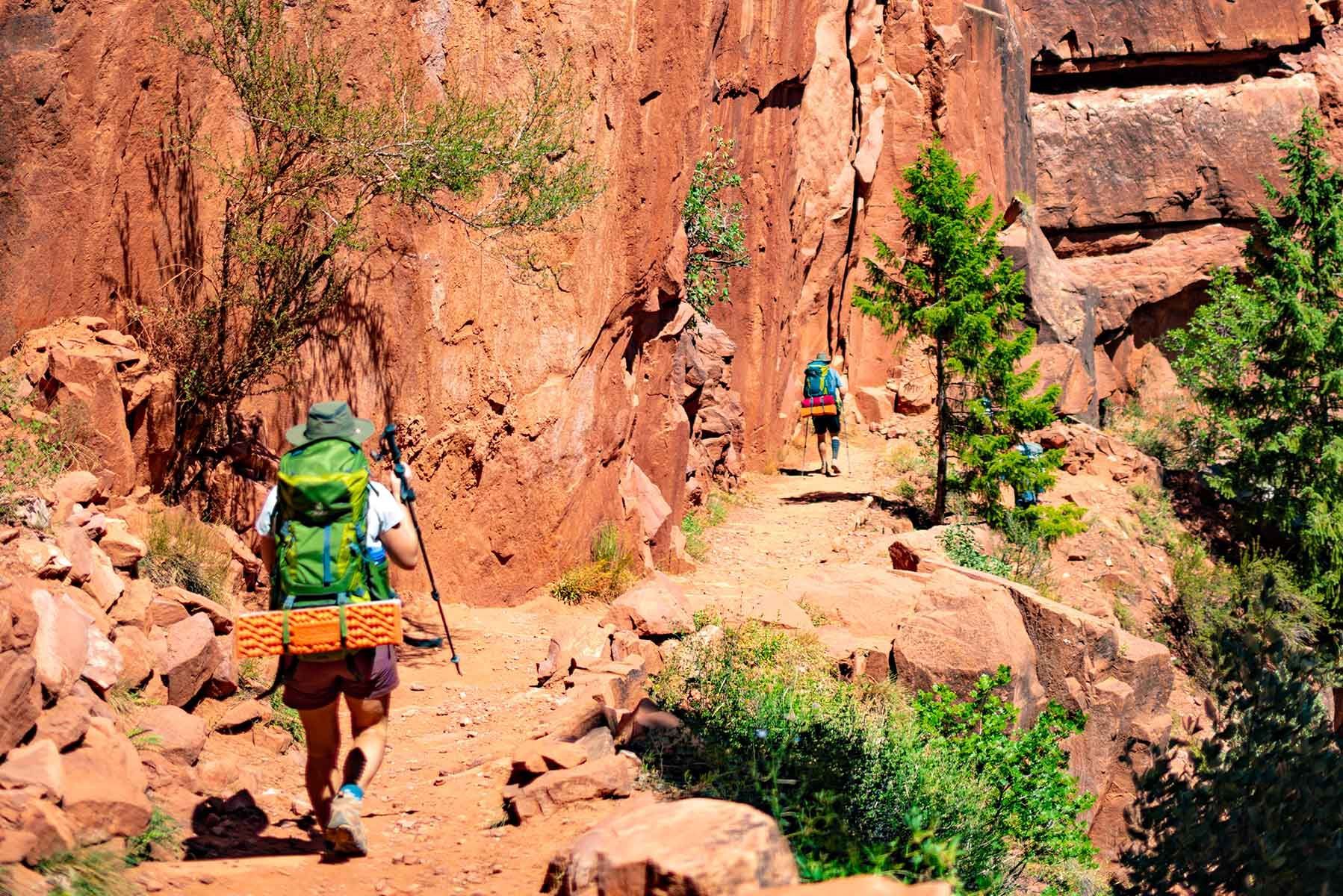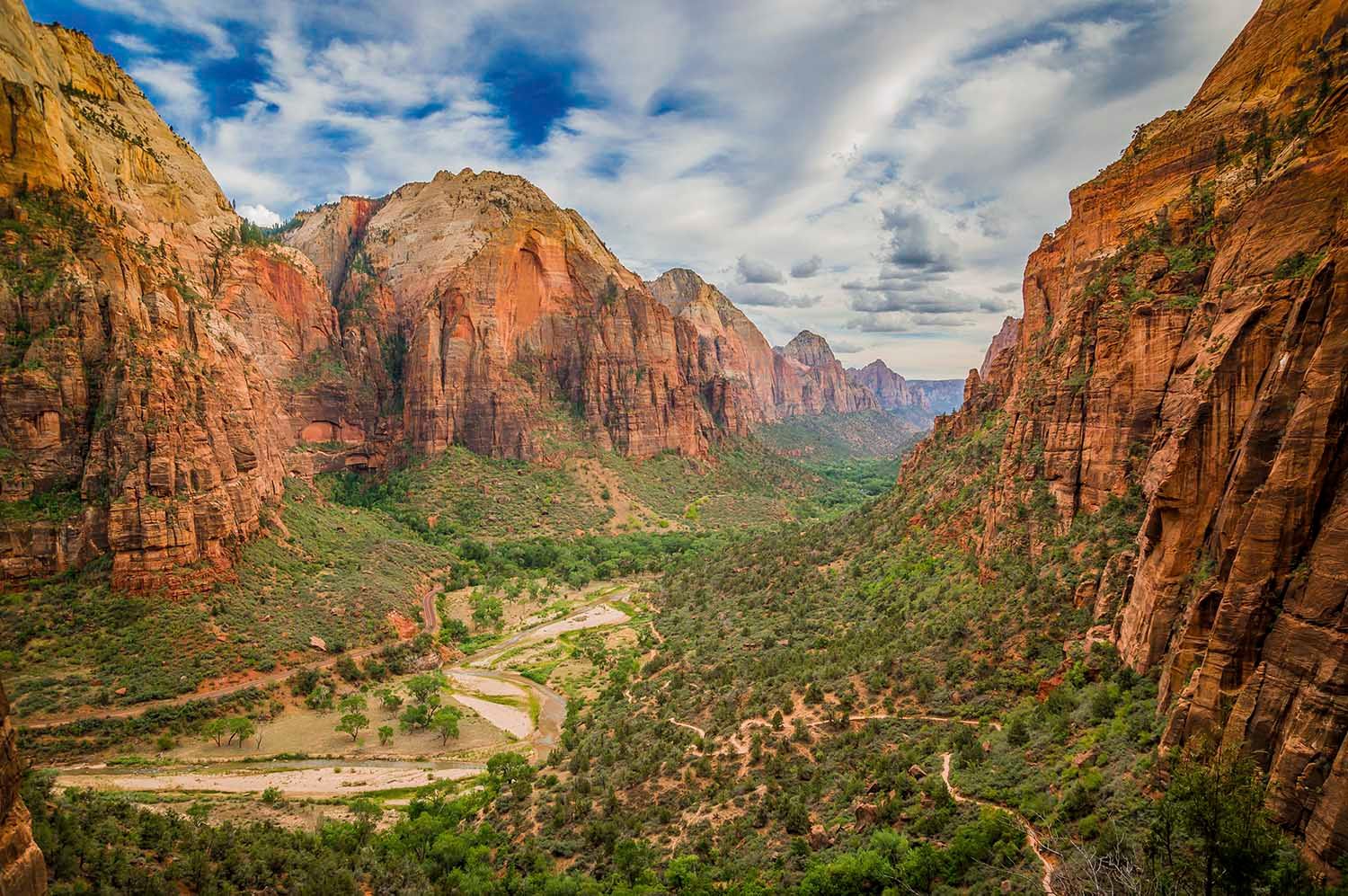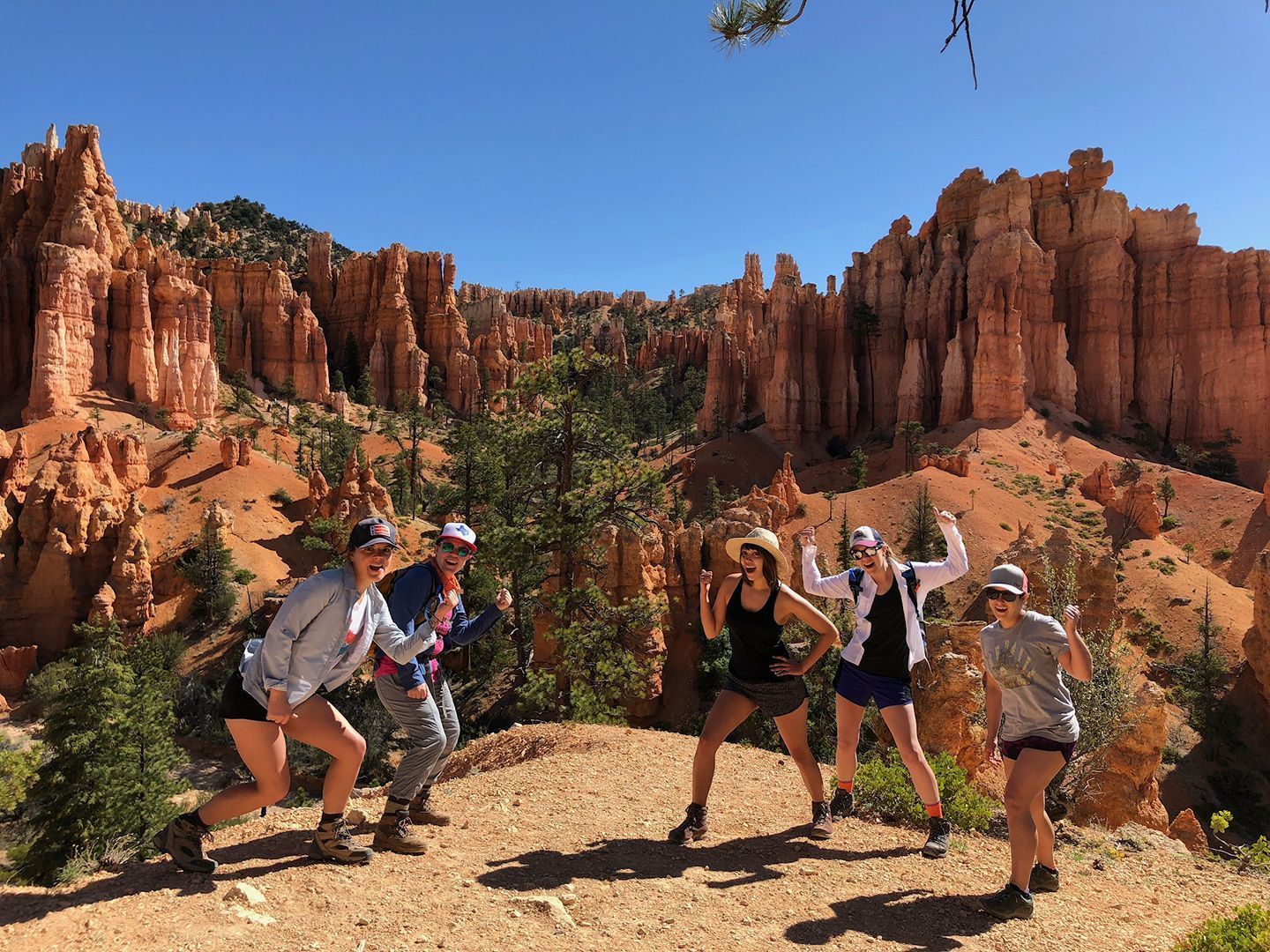Backpacking Tips For Women
Key Takeaways
- Pack smart and light: Choose a well-fitted backpack (45–65 liters) and aim to keep your total load under 20% of your body weight for a more comfortable women’s backpacking experience.
- Dress for performance: Opt for breathable, moisture-wicking women’s hiking clothes and layer appropriately for the season—comfort and weather-readiness are key to enjoyable trekking.
- Train before your trip: Build leg and core strength and practice hiking with a weighted pack to prepare your body for long distances and uneven terrain.
- Stay hydrated and prepared: Drink about a gallon of water daily, plan refill points, and carry purification tools to avoid dehydration on extended backpacking trips.
- Be safety-minded: Always share your itinerary with someone, carry a satellite communication device like Garmin InReach, and follow Leave No Trace bathroom etiquette to protect nature and yourself.
- Plan ahead for permits: Research and secure any required backcountry or national park permits early to ensure smooth access to your chosen backpacking destination.
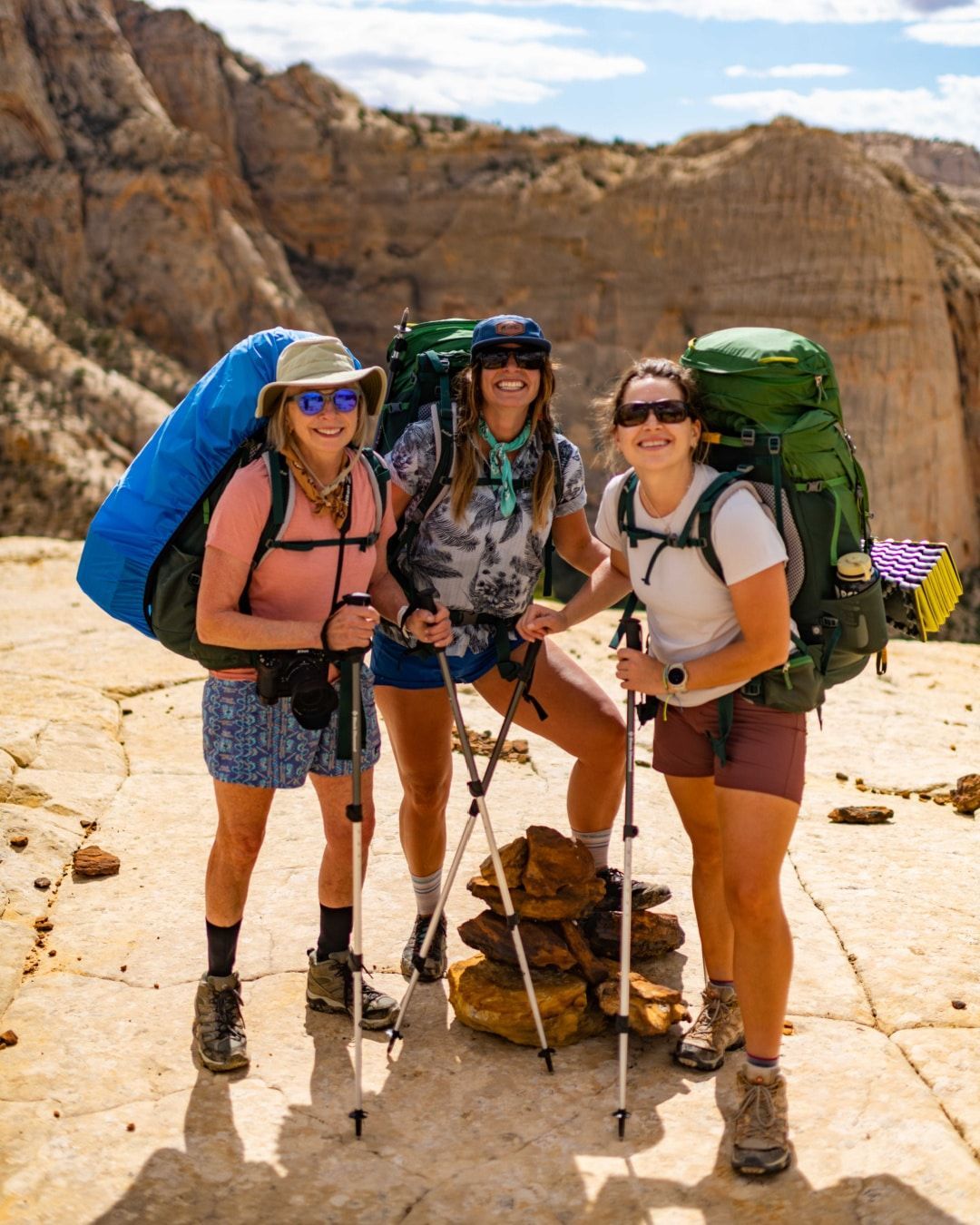
Every year, more and more people are getting into backpacking as a way to get outside, get in shape, and escape into the beauty of the outdoors. And few demographics can match the increase in this popularity as women hikers. After the release of the book and movie Wild by Cheryl Strayed, the number of women backpackers seeking
backpacking adventures has skyrocketed. In case you’re interested in starting to backpack, or have a few trips under your belt and you’re wanting to take your trekking women trips a bit further, here are a few helpful tips to make your adventure more enjoyable.
Backpacking Gear List
Besides proper physical fitness, no aspect of a backpacking trip is more important than having the proper hiking gear and clothing. And these days, with the huge variety of choices to wade through, it can be a daunting task to choose what is most essential and appropriate. The weight of your gear will have a big impact on your enjoyment, so opting for lightweight hiking equipment for women is a good decision.
BACKPACK:
Choose a backpack that is well-fitted and has a weight and volume capacity that matches the length of trips you are planning to embark upon. A 45 to 65-liter capacity will serve most womens trekking needs. Try to limit the total weight of your gear, food, and water to about 20% of your body weight.
SLEEPING GEAR:
When it comes to tents, sleeping pads, trekking poles, and cooking supplies make sure you know how everything works before you head out on the trail. There’s nothing worse than learning how to set up your tent for the first time when it’s raining.
CLOTHING:
Clothing choices should focus on comfort, quality, and functionality. Think women's hiking outfits, trekking outfits for females, or even stylish hiking outfit depending on the weather and season. For example, hiking clothes for women in summer should be breathable and moisture-wicking, while winter hiking outfits for ladies demand insulation and layering.
Some hiking accessories for women like hats, gloves, or a hiking crop top in hot climates, can make all the difference. Many prefer Columbia womens hiking pants, Patagonia women’s hiking shorts, or North Face comfortable hiking clothes for durability and fit.Don’t forget small items like a casual hiking outfit for downtime at camp. Make sure you understand where you heading and what sort of weather you should expect and pack accordingly. Women should consider quick-drying underwear in order to help avoid urinary tract infections
A comprehensive backpacking list crafted by professionals can help guide you. The key to being happy and comfortable in the backcountry is to have everything you need and nothing that really don’t need.
Hiking Attire for Women
Clothing choices should focus on comfort, quality, and functionality. Hiking clothes for women in summer, hiking clothes spring, and winter hiking outfit women can vary greatly depending on where you’re headed. Camping clothes for women should also be breathable and easy to layer.
Many women’s hiking essentials include quick-drying underwear, outfits hiking, and outdoor shirts to stay comfortable on the trail. You’ll also find many hiking accessories for women useful, such as hats and gloves.
For footwear, investing in durable hiking boots or columbia womens hiking boot options ensures stability on all terrains. Brands like Patagonia womens shoes and north face hiking boots for women are trusted among womens hiker communities.
Training for Your Trip
Staying Hydrated
Going to The Bathroom
Emergency Contacts and Service
Before heading out on any backpacking trip, make sure you inform a few people of where you will be and when you plan to be home. Keep emergency phone numbers handy, but don’t rely on having the ability to place a phone call while in the backcountry. Cell phone service is spotty in remote areas. The park service is working on building up their cell phone service at the Grand Canyon for guests and emergencies, so it is possible other parks will be following suit in coming years.
Many backcountry travelers are investing in satellite communication devices like the Garmin InReach. These devices use satellite communication to send and receive text messages, track your route, and pinpoint your location. This is an invaluable resource if you plan to spend considerable time in the outdoors. And they double as GPS units that can store downloadable maps and routes to help keep you on the right path.
Some phone apps can give you detailed maps and trail information, as well. Here are a few of the more popular and commonly used apps:
- All Trails – iOS, Android
- Gaia GPS – iOS, Android
- Cairn – iOS, Android
- OS Maps – iOS, Android. For backpacking in the UK
- Komoot – iOS, Android – Backpacking Europe
- Outdoor Active
Obtaining Permits
Whether you are backpacking in the desert or mountains, hiking in summer clothes or bundled in winter hiking outfits for ladies, the body requires a lot of water. Dehydration can sneak up on you; and although your body will show signs of dehydration early, if you aren’t watching for them, your trip can take a turn for the worse. When you spend 24 hours a day outside, with much of that exerting considerable energy, your body is going to require far more water than it normally would in your day-to-day life. A reasonable goal would be to consume about a gallon of water each day.
Don’t let discomfort with “going to the bathroom in the woods” keep you from drinking enough water. It might be one of the heaviest items in your backpack but as long as you’re drinking it, it doesn’t have to weigh you down. Planning for water refills, or access to water that you can purify, will be an important logistical consideration to pay careful attention to.
That brings us to everyone’s favorite part of backpacking: going to the bathroom. Chances are, you’re going to need to take care of business without the convenience of a toilet. First, you’re going to need a personal toilet kit that consists of toilet paper, hand sanitizer and/or wipes, a small hand trowel for digging your catholes, and some ziplock bags for your toilet trash. Some environments are not conducive to burying toilet paper so you may be required to pack it out.
Proper etiquette for using the bathroom consists of depositing solid human waste in catholes dug 6 to 8 inches deep, at least 200 feet from water, campsites and trails. When you’re finished, cover and disguise the cathole.
Regarding feminine hygiene, it is recommended that you bring extra supplies and store them in a discreet bag and bring several ziplock bags for temporary storage. Depending where you are backpacking, there may be composting toilets along the way to dispose of used products.
Training for an extensive backpacking trip will mean the difference between enjoying your backcountry adventure or struggling through it in misery. Due to the weight, you will be carrying, building strength in your legs and core should be a focus. Gym workouts can help, but getting used to uneven terrain, rocks, and ascending or descending steep inclines with weight on your back can best be practiced by simply hiking on actual trails with a weighted backpack.
Working with a personal trainer can be valuable, especially if you’re embarking on your first backpacking trip and need to put forth a lot of pre-trip training. Make sure your trainer is aware of your expected backpack weight, elevation and mileage to be traversed, over the course of the trip, and how long you have to work up to your goals.
Most national parks will require backpackers to obtain a permit in advance. The process of obtaining a Backcountry Permit can be complicated and competitive, depending on the park and its popularity. For instance, having a Grand Canyon Backcountry Permit requires applying for a permit months in advance through a lottery system. In other areas, permits are issued on a first-come-first-serve basis. If you are backpacking through multiple parks and/or Forest Service or BLM lands, you may need a permit for each location.
Though the numerous preparations and considerations for a successful backpacking adventure may seem daunting, they are essential. And making sure that every logistic is considered and planned for will help ensure a rewarding experience that keeps you coming back for more.
Once you’re ready to hit the trail, why not put these tips to use on one of our guided women’s backpacking adventures designed for connection, empowerment, and unforgettable outdoor experiences?
Frequently Asked Questions
Practical backpacking tips for women covering gear, clothing, safety, training, and comfort in the outdoors.
What are the essential backpacking items for women?
The most important gear includes a properly fitted backpack, lightweight tent, sleeping bag, sleeping pad, cooking kit, and weather-appropriate clothing. Footwear should provide ankle support and traction. Don’t forget hydration supplies, navigation tools, and a small first-aid kit. Aim to keep your total pack weight around 20% of your body weight.
How should women choose the right hiking clothes?
Pick clothing based on season and comfort. In summer, wear breathable, moisture-wicking layers; in winter, focus on insulation and layering. Quick-drying underwear, hats, and gloves are helpful year-round. Brands like Columbia, Patagonia, and North Face make durable women’s hiking outfits designed for flexibility and protection on the trail.
What is the best way to train for backpacking trips?
Start by strengthening your legs and core through hiking, lunges, squats, and cardio. Practice walking with a weighted pack to mimic trail conditions. Gradually increase mileage and elevation gain. If possible, work with a trainer who understands backpacking demands to help you prepare safely and effectively.
How do you stay hydrated while backpacking?
Plan to drink about one gallon of water per day, more in hot or high-altitude conditions. Carry refillable bottles or a hydration bladder, and always have a purification method like a filter or tablets. Know where water sources are located on your route, and refill whenever possible to prevent dehydration.
How do women handle bathroom needs on the trail?
Bring a small “toilet kit” with toilet paper, hand sanitizer, a trowel, and resealable bags. Dig a cathole 6–8 inches deep and at least 200 feet from water and trails. For feminine hygiene, pack supplies in discreet bags and carry out used items when necessary. Follow Leave No Trace practices at all times.
What permits do I need for backpacking?
Most national parks and wilderness areas require backcountry permits. Some, like the Grand Canyon, use a lottery system, while others operate on a first-come-first-serve basis. Research each destination in advance and apply early to secure your dates. Multi-park trips often need separate permits for each area.
How can I stay safe on a solo or group backpacking trip?
Always share your route and expected return date with someone. Carry an emergency contact list and consider using a satellite device like the Garmin InReach for communication in areas without cell service. Stay aware of weather forecasts, wildlife, and trail conditions to minimize risks during your trip.
What are the best apps for backpacking navigation?
Popular navigation apps include AllTrails, Gaia GPS, Cairn, Komoot, and Outdoor Active. They offer offline maps, route planning, and elevation tracking. Download your maps before heading out, since cell service is often unreliable in backcountry areas. Some apps also help track location and safety check-ins.
How can women prevent discomfort or infections on the trail?
Choose quick-drying, moisture-wicking underwear and change regularly. Maintain good hygiene using wipes or biodegradable soap. Stay hydrated to help prevent urinary tract infections. Keep a small hygiene kit and manage waste properly to reduce irritation and stay comfortable throughout your hike.
Why join a guided women’s backpacking trip?
Guided trips offer expert-led routes, safety support, and camaraderie with other women. They’re ideal for beginners or anyone looking to build confidence outdoors. Companies like FS Guides curate women-focused experiences that emphasize connection, empowerment, and skill-building while exploring stunning trails together.
Why Choose FS Guides?
At FS Guides, we specialize in curated adventures for trekking women, whether you’re searching for the perfect outfits for hiking women or guided hiking trips for women in different seasons. Our expert-led hikes are designed to empower, inspire, and connect you with the great outdoors in style.
From the trail to your heart—see what adventurers are saying about FS Guides. Our Google Business Profile Reviews are filled with stories of connection, challenge, and unforgettable moments.
Four Season Guides, 506 N Grant St suite o, Flagstaff, AZ 86004, United States
+19285251552
35.19653980, -111.62000560

